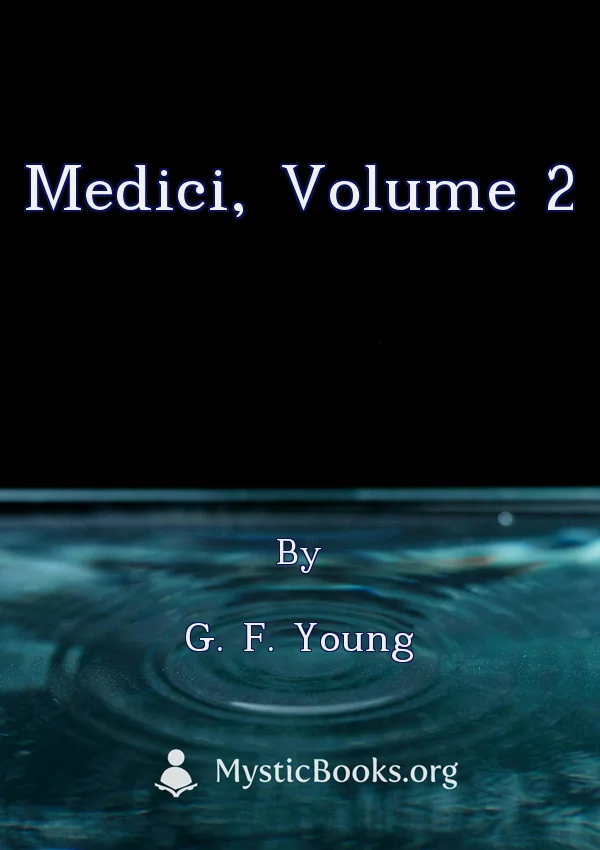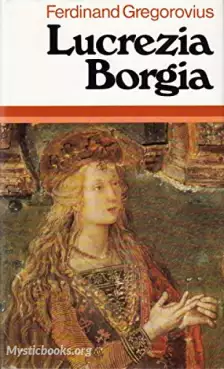
Medici, Volume 2
by G. F. Young
'Medici, Volume 2' Summary
The second volume of G. F. Young's Medici trilogy begins in 1537, with the death of Duke Alessandro de' Medici. The family's power and influence is at its peak, but it is also facing challenges from within and without. Catherine de' Medici, the last of the elder branch, is now Queen of France, and she is determined to use her influence to advance the Medici cause. However, her efforts are often thwarted by her rivals, both in France and in Florence.Meanwhile, the younger branch of the family is rising in prominence. Cosimo I de' Medici, the son of Giovanni delle Bande Nere, is a skilled general and politician. He seizes power in Florence in 1537 and establishes a new dynasty that will rule for over two centuries. Cosimo is a great patron of the arts and sciences, and he transforms Florence into one of the leading cultural centers of Europe. However, his reign is also marked by violence and repression.His son, Francesco I de' Medici, continues his father's policies of patronage and repression. He is a cruel and paranoid ruler, and he is responsible for the deaths of many of his rivals. Francesco's son, Ferdinando I de' Medici, is a more enlightened ruler, but he is also faced with challenges from both within and without. The Medici family's power and influence begins to decline in the 17th century, and it eventually becomes extinct in 1743. The family's legacy, however, lives on in the art and architecture that they commissioned, and in the cultural and political institutions that they helped to shape.Book Details
Authors
Download eBooks
Listen/Download Audiobook
- Select Speed
Related books

Arizona's Yesterday by John Cady
John H. Cady's 'Arizona's Yesterday' offers a personal account of his life as a pioneer in the Arizona Territory. The book captures the challenges and...

Bible (DRV) Apocrypha/Deuterocanon: Additions to Esther by Douay-Rheims Version
An additional six chapters appear interspersed in Esther in the Septuagint, the Greek translation, which then was noted by Jerome in compiling the Lat...

Four Masters of Etching by Frederick Wedmore
Frederick Wedmore presents short vignettes of influential artists of the 19th century who were noted for their mastery of etching: Seymour Haden, Jule...

Vices Are Not Crimes by Lysander Spooner
“Except those great crimes, which the few, calling themselves governments, practice upon the many, by means of organized, systematic extortion and tyr...

Faust, Der Tragödie zweiter Teil by Johann Wolfgang von Goethe
"Faust, Der Tragödie zweiter Teil" by Johann Wolfgang von Goethe is a philosophical drama that explores the themes of good and evil, knowledge and pow...

Life of Alfred the Great by Bishop of Sherbourne Asser
A life of King Alfred of England originally composed in Latin, possibly sometime around 888 A.D. by the Monk and Bishop Asser, although some scholars...

Bible (DBY) AT 01-05 : Pentateuque <small>(Genèse, Exode, Lévitique, Nombres et Deutéronome)</small> by Darby Bible
Le Pentateuque, composé de cinq livres, présente les débuts de la relation entre Dieu et l'humanité, ainsi que le peuple d'Israël. Il retrace la créat...

Come Rack! Come Rope! by Robert Hugh Benson
Set in Elizabethan England, 'Come Rack! Come Rope!' follows the story of two young lovers who are forced to confront the persecution of Catholics. Fac...

Art of War (Neville Translation) by Niccolò Machiavelli
Published in 1521, "The Art of War" stands as Niccolò Machiavelli's sole published work during his lifetime, a book he considered one of his most sign...

Lucretia Borgia by Ferdinand Gregorovius
According to Original Documents and Correspondence of Her Day. Lucretia Borgia is the most unfortunate woman in modern history. Is this because she wa...
Reviews for Medici, Volume 2
No reviews posted or approved, yet...